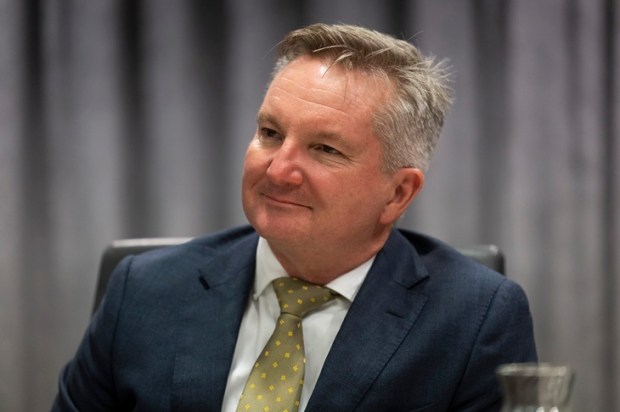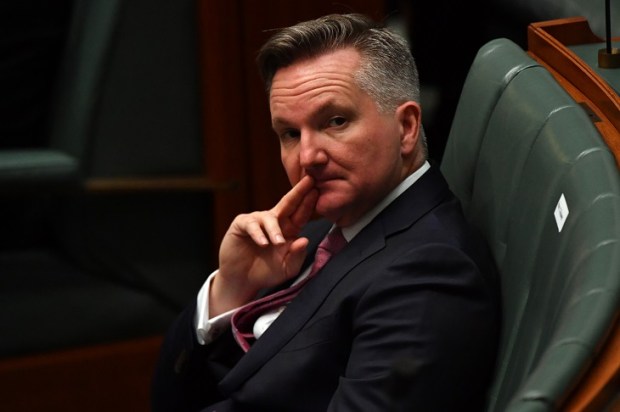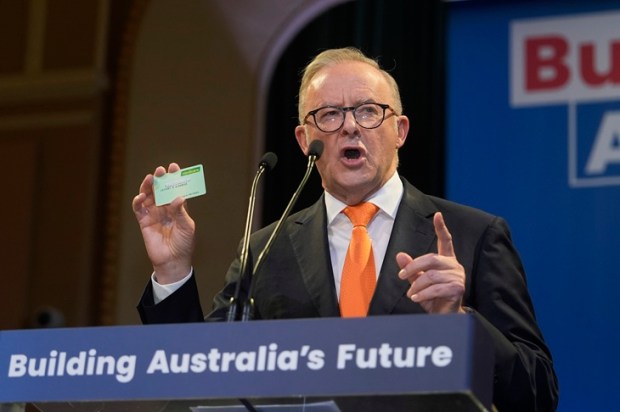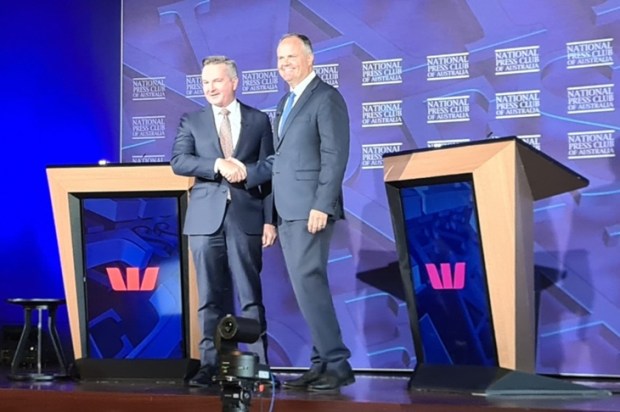At a recent press conference in Bexley North in Sydney’s south, Climate Change and Energy Minister Chris Bowen announced the opening of the latest community battery. Labor has promised to roll out at least 400 community batteries in the coming years.
In a tweet announcing the opening of the battery (which includes an EV charger), Mr Bowen stated:
This is practical, cheaper renewable energy now not expensive nuclear energy in 20 years.
https://twitter.com/Bowenchris/status/1806932011636179212
Interestingly, Bexley North is about 25km away from Lucas Heights where Australia’s OPAL nuclear reactor is located.
But what Mr Bowen didn’t say is that this battery will not keep the lights on if the power goes out. And not only that, if the power goes out the battery ceases to function until the power comes back on.
Community batteries are not a substitute for baseload nuclear power generation. Let me explain.
Much like the promised $275 cuts to our electricity bills, this is all spin from a government beleaguered by its own energy policies that are failing to deliver any of Labor’s promises.
According to Labor MP Andrew Leigh, community batteries ‘spark a powerful connection between sustainable power and social capital’. These are not just batteries but another way to redistribute wealth in the socialist tradition.
Community batteries are designed to store rooftop solar from residents who live near the battery. The idea is that ‘customers’ can ‘export more solar to the grid which increases the renewable energy available’.
Labor’s idea is that community batteries will store surplus solar produced by households, making it available, especially for those who do not have or cannot afford their own solar panels or batteries. The stored energy will then be used in times of peak demand.
Ausgrid, the east coast’s largest electricity distributor and the company that built the Bexley North battery, states that Bayside, the LGA where Bexley North is situated, has an average household electricity consumption of 12.1kWh per day.
The Ausgrid battery has a capacity of 267kWh. Theoretically, the battery at full capacity could power 22 average Bexley North households for one day.
But that number, like many of the numbers being thrown around lately, is nonsense.
That’s because the battery is only designed to work when the power is on.
Ausgrid’s FAQs on their website provide this answer to the question, can I draw on [the battery] during a blackout?
No. Community batteries will only be capable of grid-connect mode, so if the power goes down the battery will also switch off.
Ausgrid is trialling alternative solutions, such as the Merriwa Microgrid and Stand Alone Power Systems (SAPs), to provide backup power to support communities during an outage. When the power is out, the battery is out, too.
The battery does not provide reliable power. It only captures surplus solar, and only supports a small portion of the 1,656 households in Bexley North.
The Australian Renewable Energy Agency (ARENA) administers Labor’s community battery funding scheme. The first round provides $143 million to help fund 370 community batteries. In simple terms, that works out to about $387,000 per community battery as a subsidy to the provider.
But community batteries are little more than spin.
Let’s accept that the battery can’t provide electricity in a blackout. Let’s assume a 10-hour period where there is no sun. If the average household in Bexley North consumes 12.1kWh in a 24-hour period (2pm to 8pm is the peak period for electricity use in NSW), then let’s be conservative and say we consume one-quarter of our electricity overnight. That works out to about 3kWh of consumption.
That means 89 households in Bexley North will be able to access stored electricity for the period where no solar is available. By that logic, we would need 19 more batteries just in Bexley North to cover the shortfall. (Noting of course electricity generated by wind has not been included.)
According to the last census, there were 9.275 million households in Australia. To cover each household at 3kWh overnight, we would need 104,213 more batteries like the one at Bexley North to cover the shortfall of solar at night.
Using an average subsidy provided by ARENA of $387,000 per community battery, that would cost $40.3 billion in government subsidies alone. But none of them would work if there was a blackout. And there is no guarantee that so many batteries could be built on time or that they would be cost-effective in the long term.
Further, the cost of getting to Labor’s 82 per cent renewables target required to replace coal and gas is anybody’s guess. According to the Clean Energy Council, we are less than halfway there. And community resistance is growing along with our electricity bills.
Of course, Mr Bowen’s energy plan is only relying on about 400 community batteries. But reducing power bills, one of the community battery program’s benefits, may not prove as realistic as suggested.
While many NSW households have solar panels, less than 10 per cent have batteries. In May this year, those without storage who were sending surplus solar energy back to the grid between 10am and 3pm were hit with a penalty by Ausgrid of 1.3 cents per kWh (above a free threshold).
Between 4pm and 9pm, exporters were paid 2.3 cents per kWh sent to the grid (which is great during daylight savings time, but not so much during winter).
It will be interesting to see how households without batteries are charged for using the power stored in the subsidised community batteries.
I have tried to cut through some of the spin here, and while community batteries might be a good idea in come cases, in the grand scheme of things, these are barely a drop in the ocean when it comes to ensuring cheap, reliable electricity for Australian households.
But Mr Bowen insists that such initiatives are better than nuclear. How he could possibly know is beyond comprehension. And while Mr Dutton’s nuclear energy system may require government ownership, at least it is a realistic proposal to power the 9.275 million households in Australia.
Mr Bowen stated that community batteries and the Reliable Renewables plan are ‘bringing cleaner, cheaper reliable renewable energy to communities across the country’
But compared with reliable, always-on nuclear energy, Labor’s piecemeal attempts at deploying uncosted energy infrastructure to achieve their target of 82 per cent non-nuclear energy generation is unrealistic.
Pursuing renewables on the never-never is going to destroy our economy at worst and is barely plausible at best. And community batteries are only a distraction from always-on nuclear. Unless we believe the government’s spin, of course.
Dr Michael de Percy is a political scientist and political commentator. He is a Fellow of the Royal Society of Arts, a Chartered Fellow of the Chartered Institute of Logistics and Transport (CILTA), and a Member of the Royal Society of NSW. He is National Vice President of the Telecommunications Association, Chairman of the ACT and Southern NSW Chapter of CILTA, and a member of the Australian Nuclear Association. Michael is a graduate of the Royal Military College, Duntroon and was appointed to the College of Experts at the Australian Research Council in 2022.


























